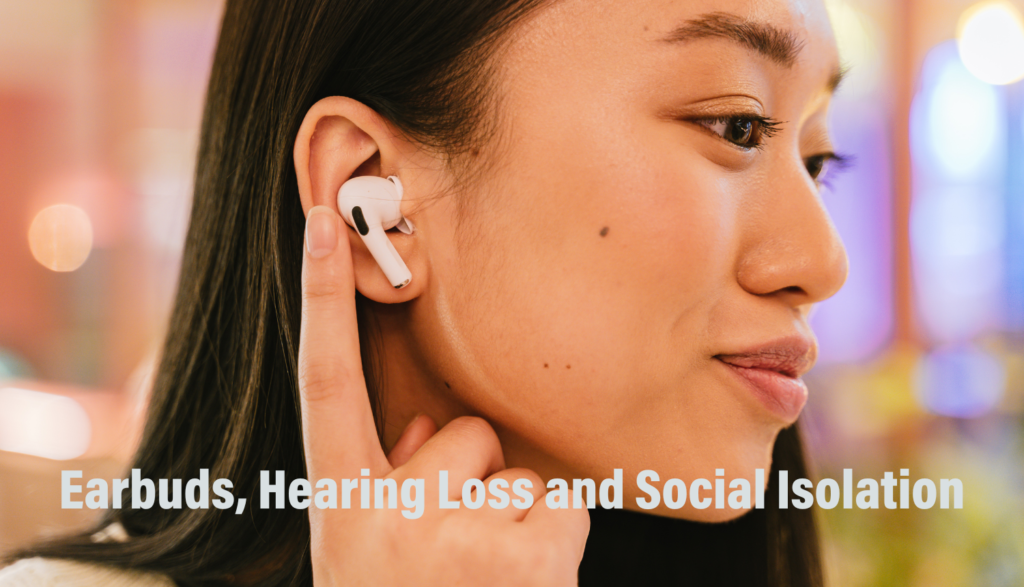“Hey bud, can I get your help with something?” I asked my teen son as I walked into the kitchen.
His back was to me, and he didn’t respond at all.
“Hey bud,” I said again, raising my voice and infusing it with a bit of urgency this time.
No response.
Finally, I tapped on his shoulder and he jumped. When he turned around, I could see what I should have realized: He had his Apple AirPods in and was listening to music.
If you have tweens or teens in your house, there’s probably a good chance you’ve had an experience something like the one I just described. Teens can easily get lost in their own thoughts and feelings in normal circumstances. But throw in a pair of earbuds, and that tendency is, ahem, amplified even further.
There are two separate, but equally important, things we need to talk about with regard to this ubiquitous technology.
The first is simple: My son couldn’t hear me because he had his earbuds in. But increasingly, scientists say that kids who have their PLDs—personal listening devices—in their ears a lot may not be able to hear at all at some point down the road.
Research published in the open-access journal BMJ Global Health late last year (as reported by Neuroscience News) suggests that as many as billion young people globally are at risk of hearing loss because of PLDs and loud concerts. Kids may listen to the former as high as 105 decibels, while live concerts can spike as high as 112 dB.
Researchers drew data from 33 different European studies conducted on people between the ages of 12 and 34. After analyzing the data, they concluded that 24% of teens and 48% of young adults are using these devices too loud—loud enough, in fact, to erode their hearing dangerously. “There is an urgent need for governments, industry, and civil society to prioritize global hearing loss prevention by promoting safe listening practices,” the authors of the study recommended.
I believe they’re probably right, which should serve as an alarm bell—if we can hear and heed it—for those of us with children constantly using these devices. And let’s face it, some of us—perhaps many of us, honestly—are dealing similar issues ourselves after growing up with first-generation Walkmans and portable music.
But there’s another, parallel issue in play here: social isolation.
Much has been made in the last several years of studies that potentially correlate social media use with adverse mental health outcomes, such as anxiety, depression and suicidal ideation—including yet another such study just this week. The isolating role of portable Bluetooth earbuds arguably hasn’t gotten the same level of attention. But you don’t have to look too far to find research and articles that implicate this technology as another factor that leads to increased social disconnect.
In his August 30, 2022, Psychology Today article “Listen Up: Why Earbuds Are a Threat to Ourselves and Society,” Jim Taylor writes, “The simple act of wearing earbuds and listening to whatever you listen to (the content doesn’t matter) is causing potentially irreparable damage to ourselves psychologically, emotionally, and socially. Perhaps the most concerning aspect of the constant use of earbuds is the purgatory in which our minds reside. We are caught in a limbo between being connected with the outside world through some sort of social interaction and being connected with our internal world of thoughts and emotions.”
In other words, earbuds create emotional disconnect inside of us and relational disconnect outside.
Taylor continues, “Fully experiencing our inner lives is vital to knowing and understanding ourselves and acting in ways that nurture our mental health and well-being. With earbuds firmly inserted in our ears, we can’t readily tell if we’re feeling happy, sad, excited, angry, content, frustrated, or in love because we’re less likely to notice or think about our emotions. In not feeling the full spectrum of emotions, we are missing out what makes life meaningful and fulfilling, what makes us feel alive. For some, earbuds are a form of self-protection against a world that they deem as hostile or self-medication that keeps them from feeling whatever pain they are trying to anesthetize themselves from.”
Wow.
Personally, I’ve seen and experienced what Taylor’s talking about. To get my son’s attention, I had to break through that earbud barrier in order to have a simple conversation with him.
In the spirit of full disclosure, I recently got a pair of earbuds for the first time myself. (I’ve resisted for a very practical, not philosophical, reason: They’re so small, they’re bound to get lost.) I’ve worn them to listen to podcasts and YouTube content while I walk during lunch. But the inevitable result is a very real social isolation: I’m not stopping to talk to anyone when they’re in, because that feels suddenly like quite a lot of work. Likewise, if I see those telltale black or white plastic speakers in people’s ears, it’s almost like they’re wearing a sign that says, “Don’t bother me: I’m listening to my stuff.”
So even as our poor eardrums are perhaps taking a beating, we may well be creating relational distance between ourselves and others. And it goes without saying—but I’ll say it anyway—this isn’t just a potential concern for “the kids,” but for any of us sticking those little plastic and rubber doodads in our ears.
So what do we do?
I don’t typically give the final word in things I write to someone else. But I’m going to do that here, because I really appreciate the way Jim Taylor sums up that “So what?” question:
“Ultimately, it is up to each of us to decide what we value, what our priorities are, and the kind of lives we want to live. The only real power we have to influence our own lives is our ability to make choices that we believe are healthy and life-affirming. At the same time, we expand that power by exercising it with our families, friends, co-workers, and others in our lives and attempting to enlist them in this cause. By doing so, the power of one extends to the power of many. And that is how movements start and collective change can occur. So how about you start by taking your earbuds out of your ears and listen up?”







9 Responses
Good article.
-As a 33-year-old, my primary purpose for earbuds is to filter out disruptive sounds from my environment. Other reasons are for convenience while moving around, and avoiding bothering those near me with my listening material. And yes, I admit that I sometimes use earbuds as a cue for others to leave me alone–mostly in the morning at work. (I’m very much not a morning person.) And yes, I’m probably guilty of turning up the volume too loud, but that’s true with literally any audio-playing device for me. I think the earbud “problem” is comparable to TV, social media, or any other mode of technology: Not inherently bad, but unhealthy in excess.
-“And yes, I admit that I sometimes use earbuds as a cue for others to leave me alone” – CowboyStormChaser, I don’t blame you. One time, while wearing earbuds, I was walking quite fast at a public indoor walking track. A woman stopped me anyway, only to point at a window and tell me that the sun was coming out. I understand that some people are lonely and looking for someone to talk to. However, there are appropriate situations for meeting people: library events (i.e. the book clubs and workshops at mine), church events, local festivals, etc. Earbuds should be a clear signal that a person does not want to chat – especially while walking at a track!
-I have earbuds, but I only put them in one ear, never in both. Also, when I use those earbuds, I set the volume as low as it will go. It’s paid off for me. I can hear my TV when the volume is only 6, sometimes lower.
One way I think this problem could be reduced is to show teenagers that not everyone listens to loud music all the time. Stick a bunch of them in an auditorium, and have them wear headphones. Instruct them to raise their hand if they can hear the music in those headphones. Start playing the music at moderate volume, then gradually decrease the volume until it is as low it will go without being silent. This strategy is known as “social norms education”.
-I like that you are taking care of your hearing. When I watch a show by myself I listen the the volume at 18.
-Before earbuds and smartphones, people would be engrossed in magazines, newspapers, print books, and portable CD/cassette players. And believe me, as a 14-year-old in 2002, I could definitely be so focused on a book that I wouldn’t hear someone calling me. We like to blame modern technology for annoyances that already existed.
Not to mention the classic stereotype of the TV/movie dad who hides behind his newspaper during meals, ignoring the rest of the family.
-Completely agree!
-I am 31 and I have problems with earbuds causing pain since I got my first pair around 15. Even over-the-head headphones can cause pain so when I wear them I put them next to my ears rather than over my ears but try to avoid them if I can because even this can still cause pain.
I don’t really understand this but I guess it is because I have been sensitive to loud noise since my neighborhood was exceedingly noisy when I was a teen: my neighbors played their stereos outside so loud the floor would vibrate so my earplugs were not very effective.
-I rarely use ear buds, but only used them one time for a Movie I was watching and I had the Volume low.